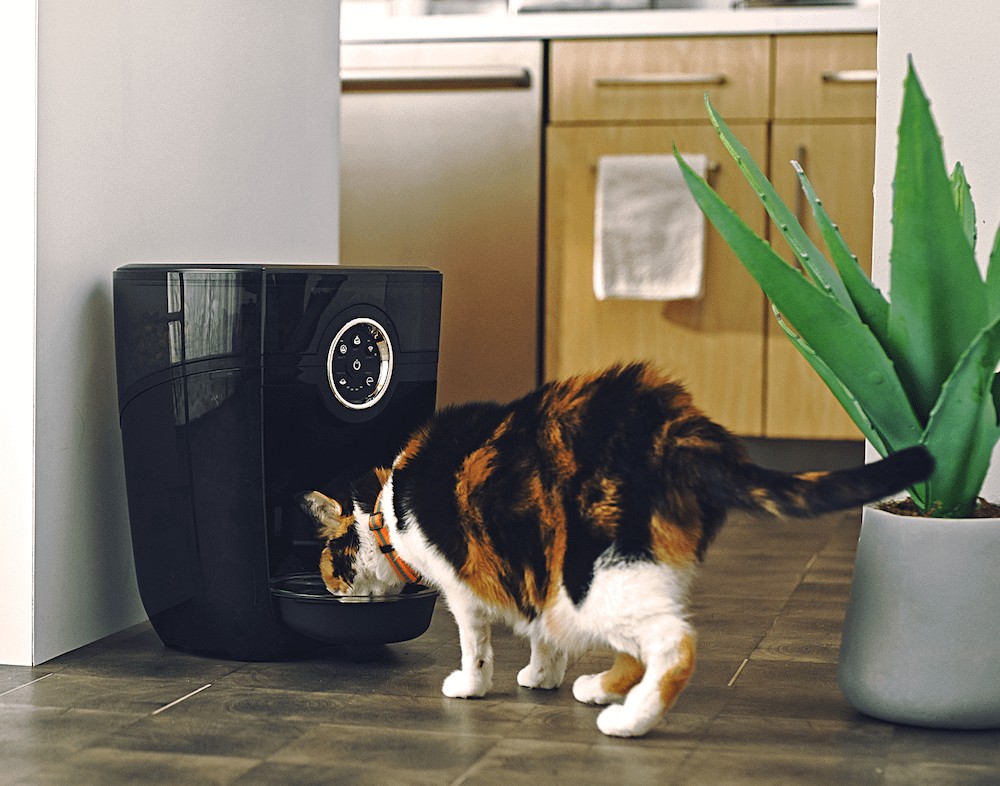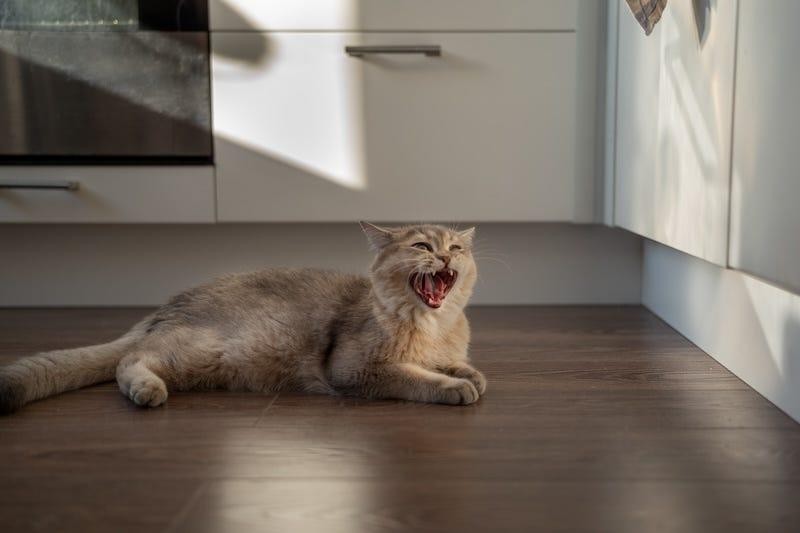Figuring out the right amount of food for your feline friend can be tricky. Many cat owners wonder, “How Many Cups Of Cat Food Per Day should I give my cat?” This guide, created by pet nutrition experts, will provide a detailed explanation of proper cat feeding.
How Long Can Cats Go Without Food?
While a healthy adult cat can survive for 1 to 2 weeks without food, prolonged fasting is dangerous. After 3-5 days without food, cats are at risk of developing hepatic lipidosis, a serious liver disorder. It’s crucial to ensure your cat receives regular meals to avoid health complications.
How Much Should I Feed My Cat?
A general guideline is that adult cats need around 20 calories per pound of body weight. So, a healthy 10-pound cat needs approximately 200 calories daily. However, it’s important to be aware that over 60% of cats in America are overweight or obese, so portion control is essential. Obesity can predispose cats to various health problems, including diabetes and musculoskeletal issues.
How Much to Feed a Cat Chart
Several factors determine the appropriate food amount, including age, weight, activity level, and health status. Kittens, for example, require more food than adult cats. Senior cats may also need adjustments based on their health or activity levels.
| Cat Type | Daily Caloric Intake | Dry Food (grams/cups) | Wet Food (grams/ounces) | Mix of both (dry & wet food) | Feeding frequency |
|---|---|---|---|---|---|
| Kitten (Up to 6 months) | 2x to 3x Adult Intake | 1/4 to 1/3 cup (50-75g) | 2.5 to 3.5 ounces (75-100g) | 1/8 cup dry + 2 oz wet food | 3-4 meals / day |
| Adult (1 to 7 years) | 200-300 calories | 1/3 cup (40-60g) | 3.5 ounces (100g) | 1/4 cup dry + 2.5 oz wet food | 2 meals / day |
| Senior (7 years and older) | 180-220 calories | 1/4 cup (30-40g) | 3 ounces (85g) | 1/8 cup dry + 2 oz wet food | 2-3 smaller meals / day |



These are general guidelines for a healthy 10-pound adult cat; individual needs may vary. Consult with your veterinarian for personalized advice.
Additional Factors Impacting How Much to Feed a Cat
Several factors can influence how much food your cat needs:
- Weight: Adjust portion sizes based on whether your cat is overweight or underweight.
- Activity Levels: Active cats require more calories than sedentary cats.
- Breed: Some breeds have specific nutritional needs.
- Body Condition: Regularly assess your cat’s body condition by feeling their ribs.
- Spayed/Neutered Status: Neutered cats may have a slower metabolism.
- Health Conditions: Pregnant, nursing, or sick cats need different nutrition.
- Type of Food: Dry food is calorie-dense, while wet food has more moisture and fewer calories per gram.
Common Mistakes
A frequent mistake is feeding based on a cat’s current weight rather than their ideal weight. If your cat is overweight, adjust their food intake to reach a healthier weight.
Combining Dry and Wet Food
When mixing dry and wet cat food, the appropriate amount depends on the brand, type, and your cat’s ideal weight. A general guideline is approximately 1/4 cup of dry food twice a day and 1/4-1/2 can of wet food as a snack. Remember to check the calorie content of each food type and adjust accordingly.
Kittens need more frequent feedings, typically 3-4 times per day. Consider switching them to adult cat food around 6-8 months.
How Often Should I Feed My Cat?
Adult cats usually thrive on one to two meals per day. Kittens, requiring more energy for growth, typically need three to four meals daily. Senior cats might benefit from two to three smaller meals per day.
- Kittens (up to 6 months): 3-4 meals per day.
- Adult Cats (1-7 years): 1-2 meals per day.
- Senior Cats (7+ years): 2-3 smaller meals per day.
What Should I Feed My Cat?
A complete and balanced, AAFCO-approved cat food from a reputable, research-based company is essential. Look for foods that have been frequently analyzed and tested to ensure safety. Cats require specific amino acids like taurine that they must obtain from their diet.
Many veterinarians recommend a combination of dry and wet food. Wet food contains a higher percentage of water, aiding in hydration, and often has fewer carbohydrates compared to dry food.
If your cat has specific health issues like diabetes, hyperthyroidism, or kidney failure, wet food is especially important.
Diets to Skip
Avoid vegetarian or vegan diets for cats due to their unique amino acid requirements. Also, raw food diets are generally not recommended because they can be unbalanced and carry dangerous bacteria. If you want to prepare homemade diets, consult with a veterinary nutritionist (DACVN) to ensure they are balanced and safe.
Signs You Need to Adjust Your Cat’s Food Intake
Monitor your cat for signs of overfeeding or underfeeding. These include:
- Underfeeding: Weight loss, dull coat, lack of energy, excessive begging.
- Overfeeding: Weight gain, bloated appearance, frequent vomiting, laziness.
- Healthy Weight: You should be able to feel your cat’s ribs without them being overly prominent.
How Should I Feed My Cat? Best Cat Feeding Methods
There are three general feeding styles:
- Meal Feeding: Offering food at specific times during the day.
- Free Feeding: Leaving food available 24/7.
- Combination Feeding: Free-feeding dry food with supplemental wet food.
Meal Feeding
Pros: Allows careful monitoring of food intake.
Cons: Requires consistent timing and may lead to begging between meals.
Free Feeding
Pros: Can prevent gorging if implemented from kittenhood.
Cons: May lead to overeating and obesity, difficult to monitor intake for cats with medical problems.
Combination Feeding
Pros: Encourages wet food consumption and supports hydration.
Cons: Requires careful weight monitoring to prevent obesity.
Why is My Cat Always Hungry?
If your cat seems constantly hungry, consider these factors:
- Inadequate Diet: The current food may not be meeting nutritional needs.
- Metabolic or Medical Issues: Conditions like diabetes or hyperthyroidism can increase appetite.
- Parasites: Worms can affect nutrient absorption.
- Boredom or Anxiety: Environmental factors can lead to overeating.
- Pregnancy or Nursing: These conditions increase energy demands and appetite.
If you notice persistent changes in your cat’s eating habits, consult with your veterinarian.
